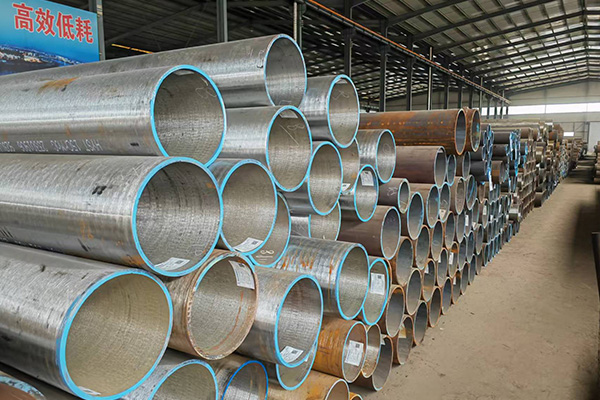
In environments where temperatures drop far below zero, standard carbon steel materials can become brittle and unsafe. This is why Low Temperature Steel Pipe has become an essential component for projects that involve cryogenic processes, LNG storage, or cold-region construction. These pipes are specifically designed to maintain their mechanical strength, flexibility, and safety even under extremely cold operating conditions.
With the continued growth of global energy and cryogenic applications, the demand for Low Temperature Steel Pipe is increasing rapidly. Many international buyers now choose China manufacturers that provide reliable bulk supply with full quality assurance and export certifications.


2. What Is Low Temperature Steel Pipe?
Low Temperature Steel Pipe is a type of carbon steel pipe engineered to perform under sub-zero conditions, typically between minus 45°C and minus 196°C. The main advantage of this material is its excellent impact resistance and ability to resist cracking at low temperatures.
These pipes are made from specialized low-carbon steel grades that undergo precise alloying and heat treatment. The process enhances their toughness and ensures stable performance in cryogenic or refrigerated environments. Common standards used for production include ASTM A333 and ASTM A334, which define the chemical composition, impact properties, and mechanical strength required for low-temperature applications.
3. Main Material Grades and Standards
The ASTM A333 Grade 6 is one of the most widely used materials for Low Temperature Steel Pipe. It offers high tensile strength, reliable weldability, and consistent performance in extremely cold conditions. Other grades like A334 are also used for specific industrial purposes.
Pipes produced under these standards are used in systems where both pressure resistance and flexibility are required. The steel is tested for its ability to absorb energy during sudden impacts, ensuring safety during operation. Unlike conventional pipes, these are carefully tested and certified to guarantee durability under freezing or cryogenic service temperatures.
4. How Low Temperature Steel Pipe Is Made
Producing Low Temperature Steel Pipe involves strict process control and advanced metallurgy. It begins with selecting refined raw materials with controlled carbon and alloy content. The billets are then formed through seamless or welded processes depending on project requirements.
After forming, the pipes undergo heat treatment processes such as normalizing or quenching to refine the grain structure and improve mechanical toughness. Each batch is tested for impact resistance, internal defects, and dimensional accuracy. Non-destructive testing, hydrostatic tests, and visual inspections ensure that every pipe leaving the factory meets international standards.
Modern China factories employ automated production lines and digital quality monitoring systems, making it possible to deliver large-volume orders efficiently and consistently to overseas clients.
5. Applications in Cryogenic and Energy Sectors
Because of their excellent mechanical behavior at low temperatures, Low Temperature Steel Pipes are used in a wide range of industries. They are commonly installed in LNG and LPG facilities, where gases must be stored and transported at extremely low temperatures. In petrochemical plants, they are used for conveying cryogenic fluids safely and efficiently.
These pipes are also applied in offshore platforms and power generation systems, where materials must withstand temperature fluctuations and pressure variations. The reliability of Low Temperature Steel Pipe ensures long service life and safety in demanding environments.
Partnering with China-based manufacturers capable of bulk supply provides additional benefits such as faster delivery, stable pricing, and guaranteed compliance with ASTM and ISO standards.
6. Why Choose China Manufacturers for Bulk Supply
Over the past decade, China’s steel pipe industry has developed advanced production capabilities, supported by modern testing technology and strict quality management systems. Many factories operate under ISO and ASTM-certified frameworks, offering competitive pricing and high consistency.
The advantages of sourcing from China include:
Large-scale production capacity suitable for bulk and customized orders
Complete traceability and test certificates for each batch
Flexible export logistics and timely delivery
Direct factory pricing that helps reduce procurement costs
This combination of capacity, quality, and reliability makes Chinese suppliers a preferred choice for global buyers of Low Temperature Steel Pipe in 2025.
7. Quality Testing and Assurance
Each Low Temperature Steel Pipe must pass multiple quality control procedures before shipment. The most critical test is the impact test, which verifies the pipe’s ability to withstand sudden shocks at extremely low temperatures. In addition, hydrostatic pressure tests confirm there are no leaks or weaknesses, while dimensional checks ensure accuracy for assembly and welding.
Optional third-party inspections from organizations such as SGS, BV, or TUV can further verify quality and compliance. This multi-step verification process ensures that every pipe delivered to clients can perform reliably under the most challenging conditions.
8. Conclusion
In summary, Low Temperature Steel Pipe is an essential material for modern cryogenic and energy industries. Its superior strength, ductility, and resistance to low-temperature brittleness make it a trusted choice for critical systems worldwide.
With the strong production capacity and bulk supply advantage of China manufacturers, global engineering projects can secure consistent quality and cost efficiency.
Contact our professional team today to learn more about available grades, specifications, and bulk supply options for Low Temperature Steel Pipe suitable for your 2025 projects.
References
GB/T 7714:Anoop C R, Singh R K, Kumar R R, et al. A review on steels for cryogenic applications[J]. Materials Performance and Characterization, 2021, 10(2): 16-88.
MLA:Anoop, C. R., et al. "A review on steels for cryogenic applications." Materials Performance and Characterization 10.2 (2021): 16-88.
APA:Anoop, C. R., Singh, R. K., Kumar, R. R., Jayalakshmi, M., Antony Prabhu, T., Thomas Tharian, K., & Narayana Murty, S. V. S. (2021). A review on steels for cryogenic applications. Materials Performance and Characterization, 10(2), 16-88.





